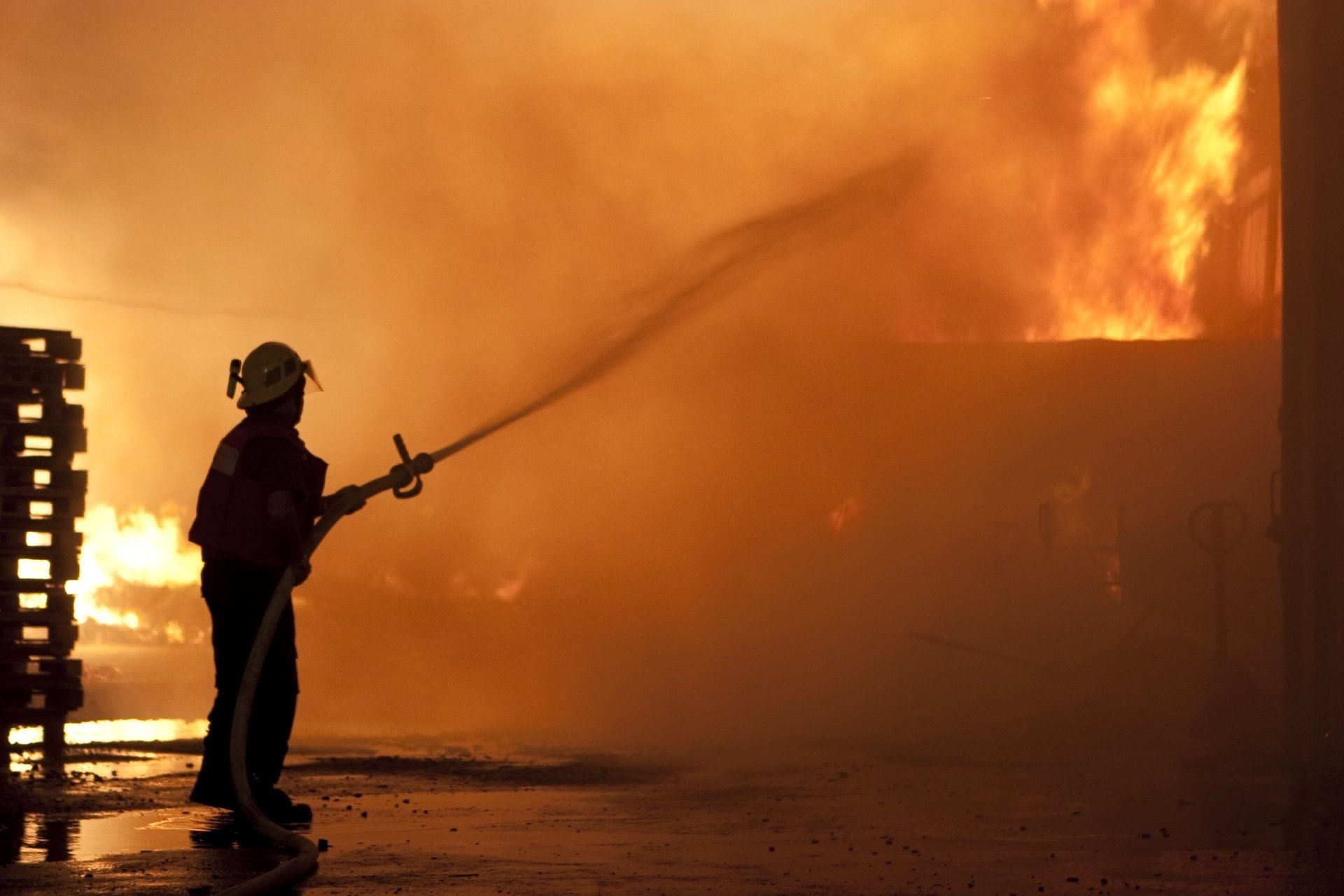A Closer Look at the Latest UK Fire Safety Regulations: What You Need to Know about the New Guidelines
As of October 1, 2023, there's a new set of fire safety rules that ramp up what's expected of Responsible Persons.

Fire safety regulations are crucial in the UK to ensure that everyone stays safe from any fire-related mishap. The government recently introduced new guidelines that aim to improve fire safety and make buildings safer for occupants. As a responsible citizen, it is essential to understand these new guidelines and how they affect you. In this article, I will take a closer look at the latest UK fire safety regulations, including the overview of the new guidelines, the key changes in the fire safety regulations, who are the responsible persons under the new regulations, the responsibilities of the responsible persons, the importance of compliance with the new guidelines, common misconceptions about the new fire safety regulations, the impact of the new guidelines on different industries, training and resources for staying up-to-date with fire safety regulations, how Consulo compliance can help businesses meet the new requirements, steps to ensure fire safety compliance, and the benefits of adhering to the new guidelines.
Introduction to UK fire safety regulations
The UK government has always taken fire safety very seriously, and the regulations in place are some of the strictest in the world. Fire safety regulations in the UK apply to a wide range of buildings, including commercial, residential, and industrial buildings. The regulations aim to ensure that buildings are designed, constructed and maintained in a way that minimises the risk of fire and ensures that everyone within the building can evacuate safely if a fire does break out. The government has recently introduced new guidelines that aim to further improve fire safety in the UK.
Overview of the new guidelines
The new guidelines introduced by the UK government aim to improve fire safety in buildings by introducing new standards for fire safety. The guidelines apply to all buildings, regardless of their size or use. The guidelines also introduce a new risk-based approach to fire safety, which means that the level of fire safety required will depend on the risk of fire. The guidelines also place more responsibility on building owners and managers to ensure that their buildings are safe from fire.
Key changes in the fire safety regulations
The new guidelines introduce several key changes to the fire safety regulations in the UK. Firstly, the guidelines introduce a new risk-based approach to fire safety, which means that the level of fire safety required will depend on the risk of fire. Secondly, the guidelines place more responsibility on building owners and managers to ensure that their buildings are safe from fire. Thirdly, the guidelines introduce new standards for fire safety, including the installation of sprinkler systems in some buildings. Fourthly, the guidelines require building owners and managers to carry out regular fire risk assessments.
The new guidelines stipulate that Responsible Persons must now:
- Thoroughly document completed Fire Risk Assessments and Fire Safety arrangements,
- Maintain a record of the identity of any individuals or organisations engaged to conduct or review assessments,
- Ensure clear identification as the responsible party for businesses sharing the same premises,
- Record and share contact details with other Responsible Persons and residents of multi-occupied premises,
- In buildings with two or more sets of domestic premises, provide residents with fire safety information in an easily understandable format.
Who are the responsible persons under the new regulations?
Under the new guidelines, the responsible persons are the building owners or managers. The responsible persons are responsible for ensuring that their buildings are safe from fire and that the occupants of the building are safe in the event of a fire. The responsible persons must carry out regular fire risk assessments, ensure that the building is designed, constructed and maintained in a way that minimises the risk of fire, and ensure that everyone within the building can evacuate safely if a fire does break out.
Understanding the responsibilities of the responsible persons
The responsible persons under the new guidelines have several responsibilities. Firstly, they must carry out regular fire risk assessments to identify any potential fire risks within the building. Secondly, they must ensure that the building is designed, constructed and maintained in a way that minimises the risk of fire. Thirdly, they must ensure that everyone within the building can evacuate safely if a fire does break out. Fourthly, they must ensure that all fire safety equipment is regularly tested and maintained.
Importance of compliance with the new guidelines
Compliance with the new guidelines is essential to ensure that buildings are safe from fire and that the occupants of the building are safe in the event of a fire. Failure to comply with the new guidelines can lead to fines, legal action and, in some cases, imprisonment. Compliance with the new guidelines can also help to reduce the risk of fire, which can help to save lives, prevent injuries and reduce property damage.
Common misconceptions about the new fire safety regulations
There are several common misconceptions about the new fire safety regulations.
- Firstly, some people believe that the new guidelines only apply to new buildings, but this is not the case. The new guidelines apply to all buildings, regardless of their age.
- Secondly, some people believe that the new guidelines are too strict and will be costly to implement, but this is not true. The new guidelines are designed to be cost-effective and practical.
- Thirdly, some people believe that compliance with the new guidelines is optional, but this is not the case. Compliance with the new guidelines is mandatory.
Impact of the new guidelines on different industries
The new guidelines will have different impacts on different industries. For example, the guidelines will have a significant impact on the construction industry, as building owners and managers will need to ensure that new buildings are designed, constructed and maintained in a way that minimises the risk of fire. The guidelines will also have an impact on the hospitality industry, as hotel owners and managers will need to ensure that their buildings are safe from fire and that their guests can evacuate safely in the event of a fire.
Training and resources for staying up-to-date with fire safety regulations
It is essential to stay up-to-date with fire safety regulations to ensure that buildings are safe from fire. There are several training and resources available to help building owners and managers stay up-to-date with fire safety regulations. For example, the Fire Protection Association offers a range of training courses and resources to help businesses comply with the new guidelines.
How Consulo compliance can help businesses meet the new requirements
Consulo compliance is a leading provider of fire safety compliance services in the UK. Consulo compliance can help businesses meet the new requirements by providing fire risk assessments, fire safety training, and fire safety equipment testing and maintenance. Consulo compliance can also help businesses to ensure that their buildings are designed, constructed and maintained in a way that minimises the risk of fire.
Steps to ensure fire safety compliance
There are several steps that building owners and managers can take to ensure fire safety compliance. Firstly, they should carry out regular fire risk assessments to identify any potential fire risks within the building. Secondly, they should ensure that all fire safety equipment is regularly tested and maintained. Thirdly, they should ensure that their buildings are designed, constructed and maintained in a way that minimises the risk of fire.
Benefits of adhering to the new guidelines
There are several benefits to adhering to the new guidelines. Firstly, compliance with the new guidelines can help to reduce the risk of fire, which can help to save lives, prevent injuries and reduce property damage. Secondly, compliance with the new guidelines can help to improve the reputation of businesses, as it shows that they take fire safety seriously. Thirdly, compliance with the new guidelines can help to reduce insurance premiums, as insurance companies may offer discounts to businesses that comply with the new guidelines.
Conclusion and final thoughts
The new fire safety regulations introduced by the UK government are designed to improve fire safety and make buildings safer for occupants. Compliance with the new guidelines is essential to ensure that buildings are safe from fire and that the occupants of the building are safe in the event of a fire. Consulo compliance can help businesses meet the new requirements by providing fire safety compliance services.
Staying up-to-date with fire safety regulations is crucial, and there are several training and resources available to help building owners and managers stay up-to-date with the new guidelines.
Contact us today for a free consultation to ensure you remain compliant with the fire safety regulations.









